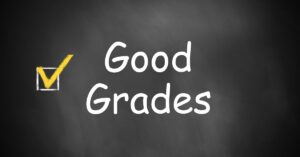
An article in the September 30 issue of the New York Times Magazine by James Traub reports on efforts by Secretary of Education Margaret Spellings to bring greater transparency and accountability in higher education. (See earlier posts on this topic here and here and here).
Several tidbits in this article are worth highlighting. The first relates to the difficulty of providing useful comparisons of diverse institutions. The article quotes Henry Bienen, the president of Northwestern University, “who says of the administration’s interest in college assessment: ‘I think what’s being done is less a burning wish to know what we have done’ than ‘a kind of clunking of them over the head.’ Why, he asks, won’t the Bush folks ‘accept the wisdom of the marketplace,’ which says that places like Northwestern have very happy customers?â€
Bienen’s observation that “free market†Republicans are advocating more governmental control over higher education is right on target. But not matter what one’s thinks of the administration’s goals, the means to regulate our way to accountability will elude us for some time to come.
There are three problems with governmental efforts to mandate accountability. First, the American higher education is a tutti frutti mix of different sorts of institutions (liberal arts colleges, research universities, publicly funded two-year colleges, for-profit schools, etc.) that are not easily compared in the way that one might be able to compare public primary and secondary schools across the country. While we might agree that a third grader in Boise should be roughly the same things in Baltimore or Boston or Beulah, once people reach the age of 18, they have many more options to pursue the sort of education that is best suits them. Comparing apples to oranges (to bananas to beans to pomegrantes) is going to be a rough job. As Beinen points out, developing the kind of sophisticated analytical tools required to compare all sorts of institutions will be quite a challenge.
Second is the difficulty of deciding exactly what to measure. Should every English major in every university be given a standardized pre-test and post-test? Or should each institution create its own testing scheme based on its definition of desirable learning outcomes? One testing option the article highlights is the Collegiate Learning Assessment, which is not so much a content-related assessment, but rather a problem-based assessment that purports to measure critical thinking and writing. Some colleges (e.g., Harvard, Duke) administer this test, but do not share the results. The CLA is perhaps one way of measuring student performance. But this runs up against the fact that some schools (e.g., Harvard, Duke) can select their students from the get-go. Can we really say that the education at Harvard is better than that of the University of Northern Colorado, if the average Harvard student presumably starts with higher degree of intelligence or aptitude or achievement from the get-go? As with everything else in educational research, the CLA cannot control the variables tightly enough to ensure that the resulting data will clarify things much.
Third is the divide between “professional†or “skills-oriented†education and the traditional liberal arts education. A student who majors in art history cannot be easily compared to a student who pursues a degree in fire science. A student who studies fashion design is not easily compared to a political science major. If one scores better than another on some standardized test, how can we know which of these students received the “better†education? Better for whom?
And this is where the whole idea of comparative assessment falls apart. Higher education in the United States is not a right, and it is not standardized in any way. This is part of its genius. We start with the idea that each student has the ability to choose the most suitable education for him or her. And then we let the market decide which student ends up at which school.
I’ll be the first to admit that this system is imperfect. And certainly the college admissions game is not completely transparent because consumers lack perfect information. But prospective college students and their family do have access to information. There are plenty of guides, analyses, databases, editorial opinions (and blogs!) that consumers can draw upon for better information about the colleges that may be the best fit.
And of course there are independent educational consultants (like me) who help families wade through the mire of information as students embark upon the college selection process.
But for me, what we need is more transparent reporting of data (the College Navigator site from the National Center for Education Statistics is a good start). And certainly parents should be demanding more and better advising in our high schools.
The bottom line is that, as Henry Bienen points, American higher education is a free market. As such, the rule of caveat emptor applies: buyer beware.
Mark Montgomery
Montgomery Educational Consulting





